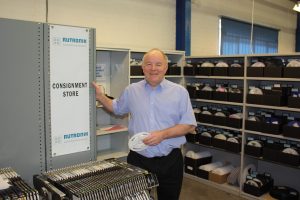 The component supply chain has changed significantly during the last 10-15 years, particularly from the CEM’s perspective, with perhaps the biggest change being the shortening of lead-times, thanks to the formation of much closer relations between all players in the supply chain and the extent to which information is now shared.
The component supply chain has changed significantly during the last 10-15 years, particularly from the CEM’s perspective, with perhaps the biggest change being the shortening of lead-times, thanks to the formation of much closer relations between all players in the supply chain and the extent to which information is now shared.
These closer relationships, and hitherto unseen levels of collaboration, are not only shortening lead times but are also adding significant value to the supply chain and the manufacture of cost-competitive products.
For instance, most of Speedboard’s customers now share with us the expected lifespan of each product, and whether demand is likely to be at a fixed rate or whether peaks and troughs will be the norm. We feed all the product profiles into our materials management system to form consolidated component requirement profiles, which we share with our preferred suppliers.
Working with our suppliers we then implement a mixture of consignment stock, buffer stock, Kanban and min-max agreements, which govern where stock is kept, who owns the stock, at what rate it will be replenished and when payment is to be made. Also, CEMs in general, and Speedboard particularly, are far more involved in Design-for-Manufacture, -Test and –Procurement issues, and have a far greater influence over component selection.
A decade ago, component manufacturers and distributors had their sights fixed firmly on OEMs; and getting their components designed into end products. Indeed, CEMs were seen as just ‘board stuffers’, seldom involved in procurement decisions and who would often be supplied with free-issue materials. However, with the global trend towards outsourcing all but core activities – along with market pressure to reduce NPI lifecycles, the role of good CEM/EMS companies has changed considerably.
Also, with the emergence of industry legislations (such as RoHS in 2006 and WEEE in 2007), sensitivities over conflict minerals and the need for greater traceability within the supply chain, in sectors like medical and aerospace, CEMs now take on responsibilities such as component lifecycle management.
The last ten years have also seen the emergence of a great deal of supply chain automation, much of which has added value. In some cases though dangers have been introduced. For instance, unless stock availability, lead-times and manufacturers’ information are regularly updated and verified, problems with automated quoting and ordering systems will not come to light until it is too late.
At Speedboard, we embrace new technology to enhance our supply chain management but we will never lose sight of the fact that it is still very much a human process. Also, we are continually developing ever-stronger relations with our suppliers, as meeting our customers’ demands is increasingly becoming a shared responsibility. They act as part of our purchasing and warehouse departments, just as we have become the shop floor for our customers.

